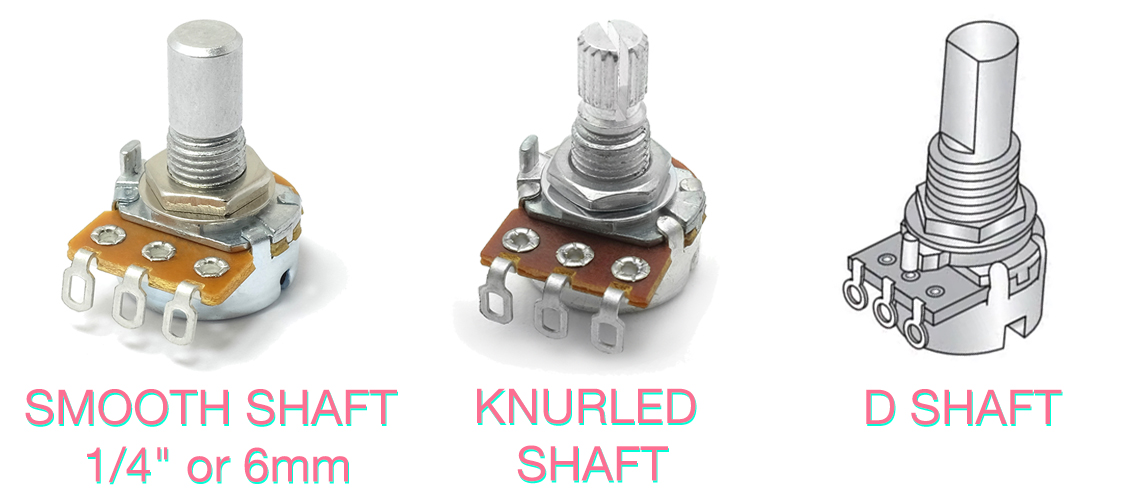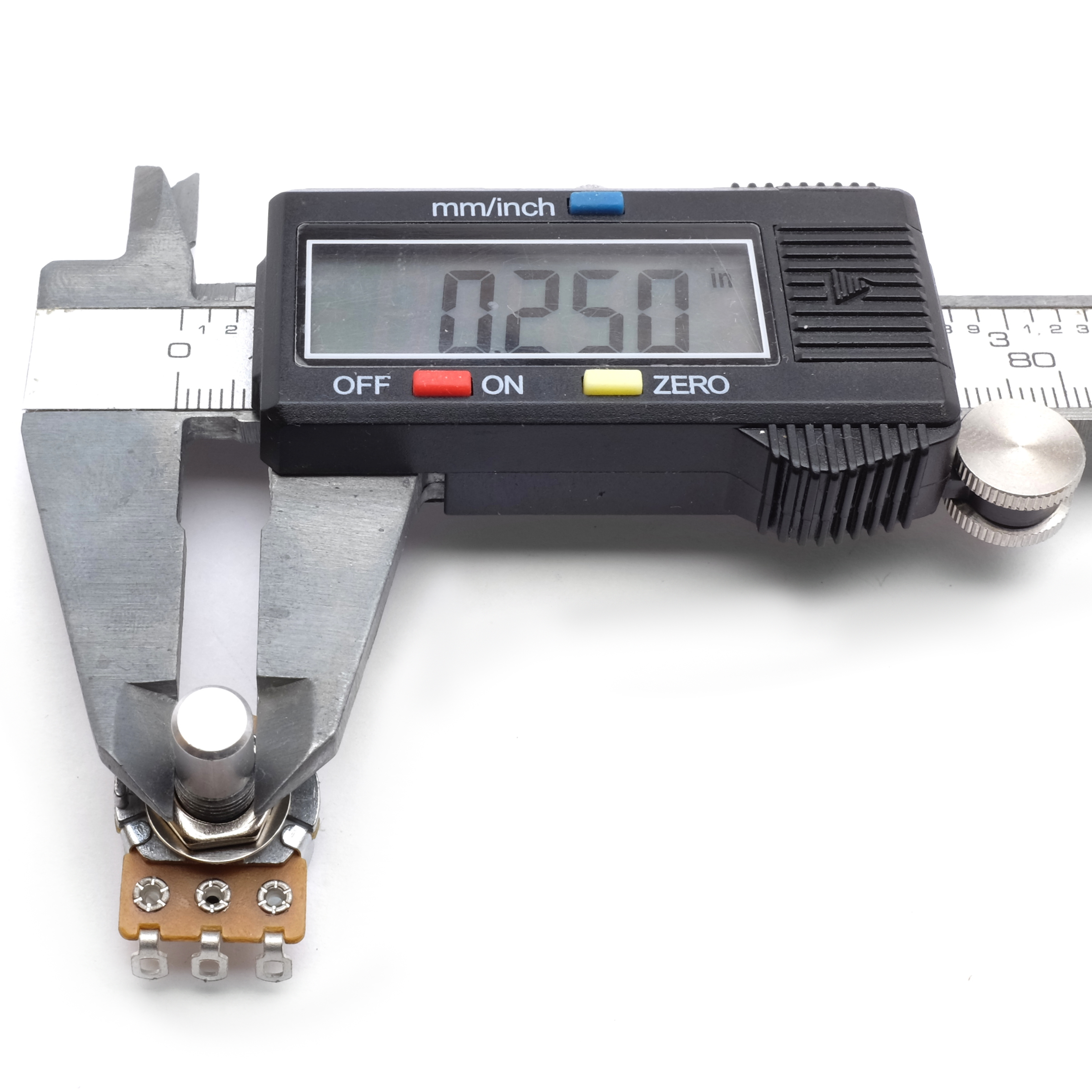What Knob Will Fit on My Gear?
Posted by Rebecca on Sep 23rd 2019
Hey! Will this knob fit on my pedal / modular synth?
It's a question we get asked all the time! If you've ever thought about swapping knobs on a pedal, amp, guitar, eurorack module or other noise machine, grab a pair of calipers and read on.
The quick-and-dirty Love My Switches 3-step program to figure out what knob to buy:
1. What kind of potentiometer shaft does your piece of gear have? Remove the offending knob and find out!
2. Do we have a knob that is an exact fit for that potentiometer shaft? All of our knobs indicate shaft size (1/4" or 6.0mm) and style (smooth or knurled).
3. If yes, what are you waiting for? Buy that knob! If no, then let's see if we can find you a "close enough" fit that functions well and looks awesome.
Keep reading for some basic information on sizes and styles of potentiometer shafts, how to measure shaft diameters of potentiometers and knobs, and "close enough" tips that can help you make a decision on whether a particular knob will fit on your piece of gear.
Potentiometer Sizes and Styles
There are three main types of potentiometer shafts in our audio world: smooth shaft, 18T split/knurled shaft, and D shaft. The knob you use will depend on the shaft style.

Smooth Shaft
A smooth shaft potentiometer features—you guessed it—a smooth shaft. This type of pot fits smooth shaft knobs, which slide onto the shaft and then are fastened by tightening a set screw against the shaft. Larger and/or heftier knobs may use two or more set screws for added security.
Within the audio industry, you'll find that most smooth shaft pots measure 1/4" (6.35mm). You'll also see 6.0mm, but it's less popular.
Get "close enough": What happens if a 1/4" knob goes on a 6.0mm pot?
For best fit, use a Potentiometer Adapter. These smooth brass sleeves slide onto the pot shaft, converting a 6.0mm pot into 1/4".
You often can use a smooth shaft 1/4" knob on a 6.0mm pot, whether smooth or knurled shaft. (Some people report a slight wobble off-axis when the knob is turned, but it's pretty negligible for most builders. It depends on how particular the personality of the user is.)
18T Split/Knurled Shaft
The "18T" in this potentiometer refers to the number of "teeth" around the shaft. Each one helps to grip the inside of a 18T or 36T knurled shaft knob, which features corresponding teeth.
The diameter of the 18T knurled shaft pot is 6.0mm.
Get "close enough": Can I use a smooth shaft knob on a knurled shaft pot?
Yep! Most 1/4" knobs fit will securely on a 6.0mm knurled shaft pot. Again, a Potentiometer Adapter can be your friend here. Slide on the adapter and voila!—a perfect fit for your 1/4" knob.
D Shaft
D shaft potentiometers (also called "flatted" potentiometers) bear resemblance to their name: The shaft forms a "D" shape, with one flat edge.
There are many sizes of D shafts; the most common size measures 6 x 4.5mm. For best fit use a D shaft knob on a D shaft pot.
Get "close enough": Expect some trial and error.
Some 6.0mm knurled shaft knobs will fit tightly on D shaft potentiometers. This seems to vary by potentiometer and finding a fit is more of an art than a science.
A smooth shaft knob can be retrofit, using a shim, to fit a D shaft pot. Additionally, 1/4" knobs with long set screws should still work—as long as the set screw is long enough.
We've had luck using . . . wait for it . . . a Potentiometer Adapter. For the long-term, use your shim-making skills to shore up the space within the adapter to make sure that the adapter stays firm if there is any pressure from the set screw on that area.
How to Measure
The best way to measure the diameter of a potentiometer shaft, or the inside diameter of a knob, is by using a digital caliper. This genius invention allows for quick, precise measurements in inches or millimeters along a sliding rule. Wikipedia has a nice explanation of all the parts and how to use them. You can pick up an inexpensive pair at most any hardware store or online shopping site like eBay or Amazon.

More questions? Contact us and let us know what topics you'd like us to cover on the blog.
